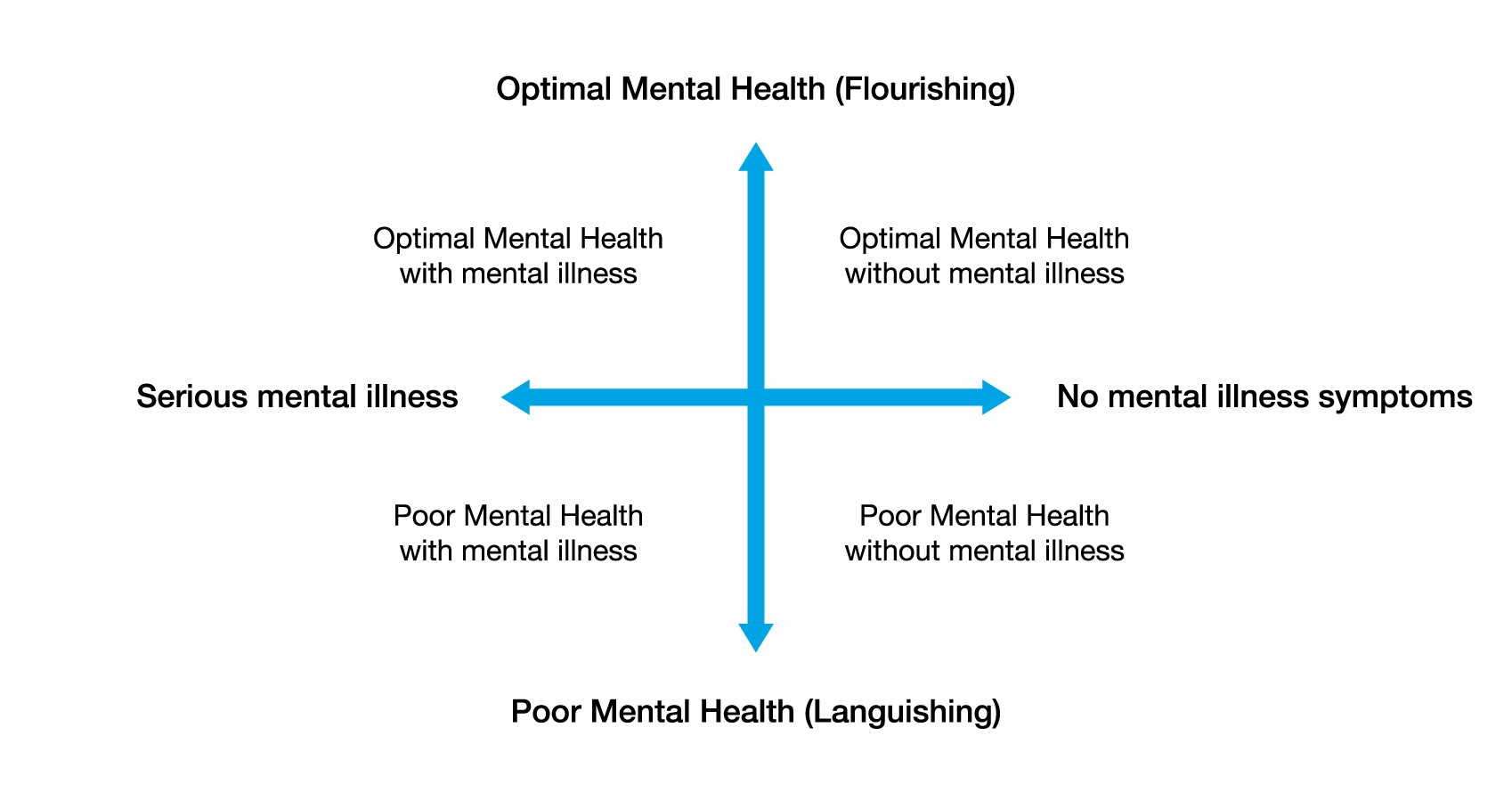Appendix B – Dual-Continuum Model
According to the dual-continuum model of mental health and mental illness, mental health is not merely the absence of mental illness (Westerhof & Keyes, 2010). An individual’s ability to thrive and flourish is not negated by a diagnosis of a mental illness. Consider the dual-continuum model (CACUSS & Canadian Mental Health Association, 2013):

The dual-continuum model is divided into four quadrants. On the x-axis is a continuum of serious mental illness on one end on no mental illness symptoms on the other end. On the y-axis is a continuum of poor mental health (languishing) on one end to optimal mental health (flourishing) on the other end. As such, someone can have optimal mental health without mental illness, they can have poor mental health without mental illness, they can have poor mental health with mental illness, and they can have optimal mental health with mental illness.
Many people with a mental illness live rich and rewarding lives. Many people who do not have a mental illness struggle with their mental health. We hold this model in mind when developing and curating resources because it allows a nuanced conversation and recognizes the importance of skills, knowledge, and attitudes that allow for good mental health and acknowledges the need for literacy about mental illnesses, including their symptoms and treatments. Mental health and wellness resources should be inclusive of a range of experiences, should not place mental health in opposition to mental illness, and should collectively address all four quadrants of the dual-continuum model.
Media Attributions
- Dual-Continuum Model © BCcampus, based on the conceptual work of Corey Keyes and a diagram created by CACUSS & Canadian Mental Health Association is licensed under a CC BY-NC (Attribution NonCommercial) license

